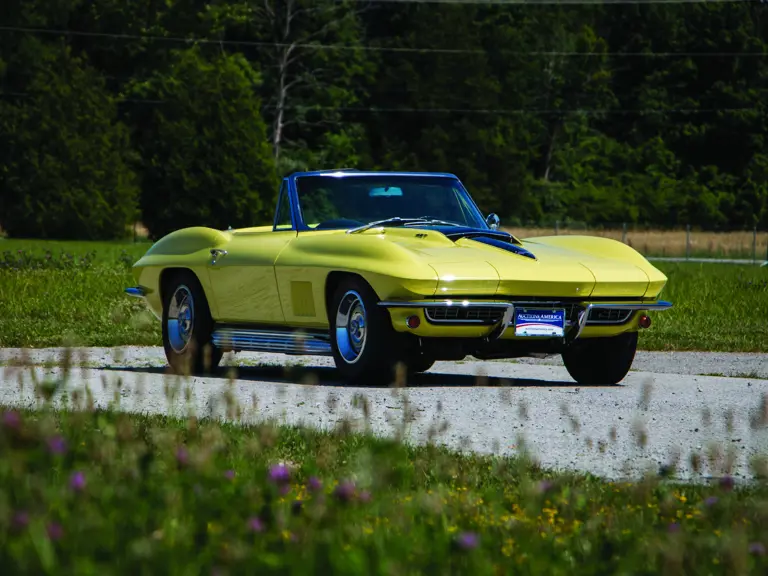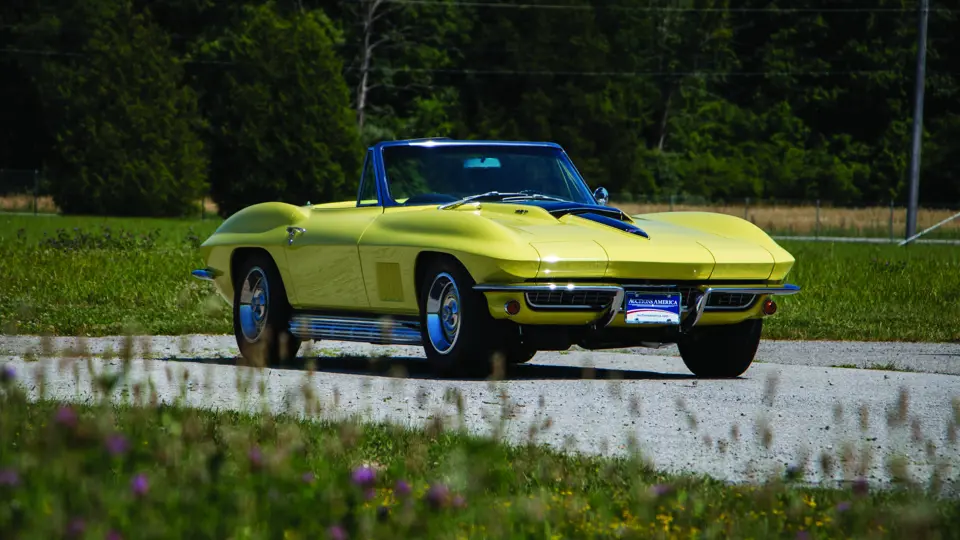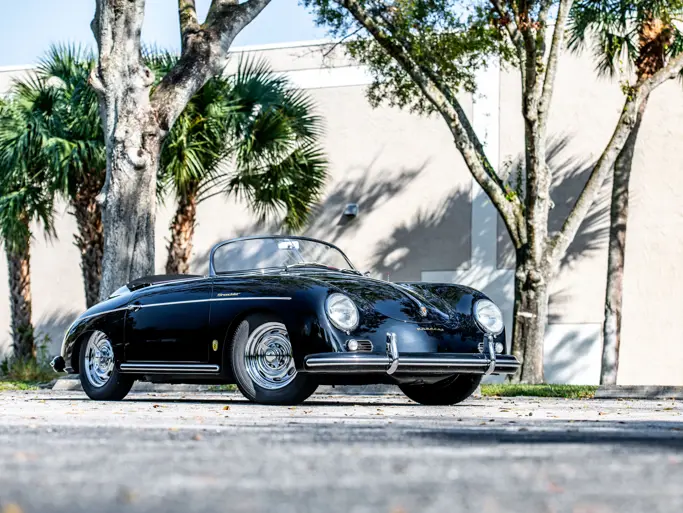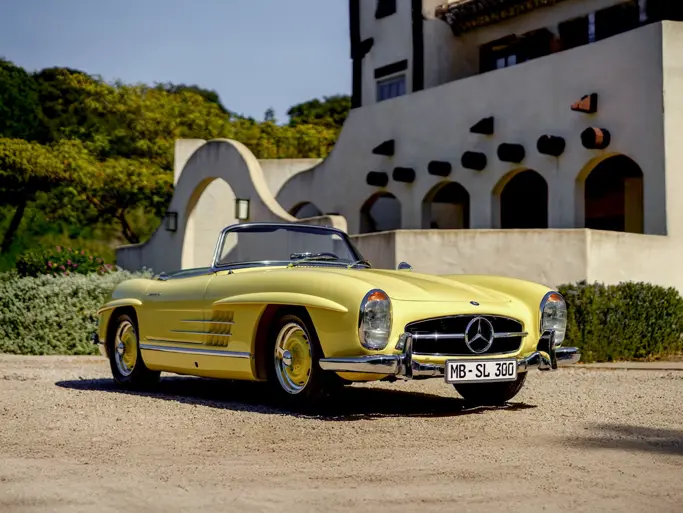If the original Corvette was a ground-breaking device, the second-generation Vette, introduced in 1963, was even more so. It was called “Sting Ray,” for its distinctive styling, and it was, apart from the engine and front suspension, completely new. It was shorter and lighter than its predecessors, and it had a new ladder-type chassis frame and a stronger body support structure. Its independent rear suspension, the first on a U.S. production car, was novel, with its chassis-mounted differential driving through halfshafts to the wheels and transverse leaf-spring suspension. It was designed by legendary engineer Zora Arkus-Duntov and was simple, highly effective and provided a great “bang for the buck.”
This Corvette has a recent body-on restoration in Sunfire Yellow with a black hood stinger, soft-top and interior. It is driven by the L36 427-cid, 390-hp V-8 engine with four-speed manual transmission; despite having the antenna, it is a radio delete example. Among the equipment are four-wheel disc brakes, factory side pipes, Rally wheels and new redline radial tires. Only 3,832 customers paid the $200.15 cost for this engine option when new from nearly 23,000 total Corvettes sold in 1967.
The original Sting Ray Corvette reached its zenith in 1967, and it is widely considered the best of its generation. A period Car and Driver magazine reader poll declared it the “best GT/sports car over 3,000-cc.” This car is a stunning example that is mechanically excellent and displays aesthetic excellence. Turn the key and experience America’s true sports car.



 | Auburn, Indiana
| Auburn, Indiana


